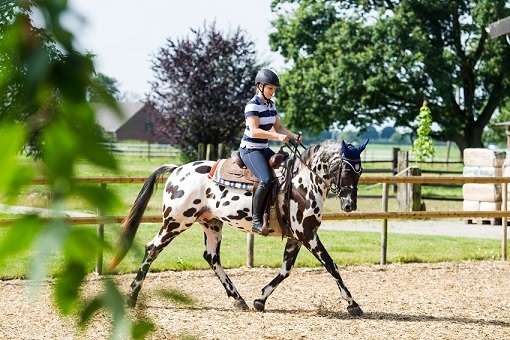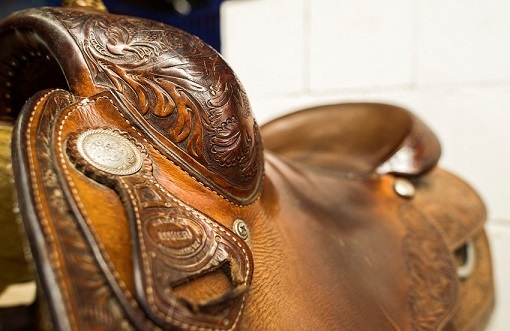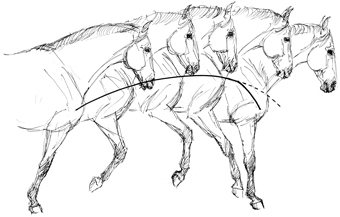Western saddle helps dressage horses with saddle trauma
The saddle is the connecting element between horse and rider and has an important influence to whether the horse feels comfortable under the rider or not. Far too often we see saddles that restrict the movement of the shoulders, inhibit the supply of the trapezius muscle or are not positioned in the center of gravity – to mention just a few of the most common faults. Even custom-made saddles that are fitted to missing or compensatory musculature can only add to the suffering of the horse.
With these preconditions, rhythm, impulsion and suppleness as the foundations of health-protecting horseback riding recede into the distance, which sooner or later will lead to severe health issues such as kissing spine, fetlock lameness, navicular syndrome, etc. Therefore, every horse not only needs to have an individually fitted saddle, but also the horse – regardless of the age or use – needs to have gained enough muscles throughout functional training in hand before the custom-made saddle is fitted, so as the next step of training with a rider will cause neither pain nor stress.
Especially the psychological aspect of an ill-fitting saddle is very often largely underestimated in horse training. In particular with sport horses that come to us because of rideability issues, we repeatedly see that even after thorough basic training on the lunge, they fall back to old movement and behavioral patterns as soon as they have a – now correctly fitting – dressage or jumping saddle on their back again. Most of the times we observe this reaction already without a rider on the horse, when the saddled horse doesn’t show the same movement quality while being lunged with saddle than it did without saddle.
In our experience, an excellent way to train horses with saddle trauma is to ride them with a western saddle in the beginning. This doesn’t change anything about the riding style – the biomechanical reality in the horse stays the same, be it with a western saddle or a dressage saddle. However, due to the changed weight distribution with the western saddle, those horses are given the chance to feel a new sense of movement and to open themselves up for a new, positive riding experience. In most cases, sooner or later, it is possible to change back to the traditional saddle – only rarely the trauma runs so deep that the western saddle stays the one and only option. Due to its larger contact area and consequently the optimized load distribution, the western saddle is also strongly beneficial for horses with kissing spine.

At the ARR Center for Anatomically Correct Horsemanship, the western saddle is an important element throughout the training of horses of all races and types of use. But also for western saddles, there is a huge range of models that needs very careful selection. This is all the more true as the possibilities of adapting are smaller with western saddles than with traditional saddles.

In many years of co-operation with a saddlery in the US, we have therefore developed the “ARR Spezial Diamond C” saddle. It is the replica of an original Bob Loomis saddle with three-way rawhide and leather rigging and a tree of the old type that has a straight front bar which provides more freedom of movement for the shoulder – unlike modern trees that have long-drawn front bars and therefore lie on the shoulders. Thanks to the specially for ARR designed back line, this saddle offers a fit that suits many horses. In Germany, the western saddle “ARR Spezial Diamond C” is exclusively marketed by FD Saddlery and is available in light and dark color of the leather.

